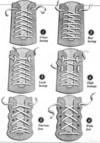01.07.2024
News

Good luck to all those Olympians heading to Paris 2024! Your dedication will reward you with unforgettable memories and friendships for life.
Whether you are at the start or the pinnacle of your athletic journey, the need to keep pain and injury free is paramount. Footbed Dynamics have worked with many professional athletes and people looking to keep fit and active for a healthy lifestyle. All receive the best advice to keep them on their journey and all bring a smile to our faces when we hear their incredible feats.
05.03.2015
News

Angel Rangel of QPR FC, ex-Swansea City, has customised insoles at Footbed Dynamics
Angel Rangel of QPR FC and ex-Swansea City FC had a feet treat today when his customised insoles were ready for his football boots to carry him through to the end of the season!
Angel is a long term supporter of the work of the clinic and wearing his special footbeds have kept him ready for professional sport demands for a number of years. He is able to wear this support in all his training shoes to keep his biomechanics working efficiently.
05.03.2015
News
![Aneurin Donald visits Footbed Dynamics]() Visiting Footbed Dynamics was Aneurin Donald to collect his New Balance sponsored kit & footwear ahead of his England U19s cricket tour to Australia this month. As a long-term supplier of New Balance, Chris Sharp was able to match up Aneurin’s exciting young talent with the best equipment to keep his success going. Perfect preparation to push on his Glamorgan career in 2015 too! Good luck to all the U19s squad
Visiting Footbed Dynamics was Aneurin Donald to collect his New Balance sponsored kit & footwear ahead of his England U19s cricket tour to Australia this month. As a long-term supplier of New Balance, Chris Sharp was able to match up Aneurin’s exciting young talent with the best equipment to keep his success going. Perfect preparation to push on his Glamorgan career in 2015 too! Good luck to all the U19s squad
http://www.ecb.co.uk/news/articles/england-under-19s-squad-announced
07.04.2011
News

How difficult can it be? One shoe, one lace, You thread it through the holes, tie it up and off you go. Read on as Chris Sharp of Footbed Dynamics talks about the main types of lacing, its advantages and disadvantages, and how special lacing techniques can help specific foot types. Using the wrong lacing pattern for your foot shape can cause discomfort, blisters and, at worst, injuries.
BASIC LACING
1. Cross Lacing: most people lace their trainers like this (see diagram). The advantage is that cross lacing holds the foot firmly in position laterally. The disadvantage is that is can put an uncomfortablle amount of pressure on the top of the foot if the laces are pulled too tightly.
2. Bar Lacing: favoured by the armed forces. The advantage of this method is that it places less pressure on the top of the foot. The disadvantage is that the lace tends to stretch, reducing stability.
The big drawback with both of these basic lacing patterns is that neither allows the foot to expand during exercise. If you pull your laces snug before a session, chances are that 20 minutes later your shoes will be pinching.
PRESCRIPTIVE LACING
3. Lock Lacing: using the extra two holes sometimes found at the top of the lace box allows for expansion during exercise. Lock lacing can be used in combination with any other lacing pattern. Take each end of your lace back inside the shoe at the extra hold, forming two loops. Then lace through the opposite loop and pull towards the ankle to tighten the loops, then tie the laces in the normal way.
4. High Insteps: with a high instep, whether you use cross lacing or bar lacing, you are likely to feel lace pressure. To give the foot stability and relieve pressure, literally lace around the peak of the instep, using cross lacing below the instep and lace lock above the instep, as shown.
Most trainers have an extra line of holes along the lace box, which are there to give a multiwidth facility:
5. Narrow feet: use the lines of holes that are furthest apart to make the shoe fitting narrower.
6. Wide feet: using the holes that are nearest together gives a larger width fitting.



